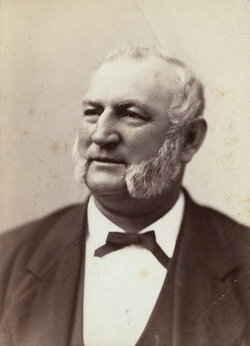From Wikipedia, the free encyclopedia
Adam John Forepaugh (February 28, 1831 - January 22, 1890) was an American entrepreneur, businessman, and circus owner. He owned and operated a circus from 1865 through 1890 under various names including Forepaugh's Circus, The Great Forepaugh Show, The Adam Forepaugh Circus, and Forepaugh & The Wild West.
Biography
Forepaugh was born into poverty in Philadelphia, Pennsylvania to John A. Forepaugh and Susannah Heimer. He was working in a butcher shop at age 9. He moved to New York City and began a business dealing in horses and other livestock. He made a fortune during the Civil War selling horses to the U.S. government.
In 1864, Forepaugh sold 44 horses to John V. "Pogey" O'Brien for $9,000 so he could start the Tom King Excelsior Circus. When O'Brien could not repay the loan, Forepaugh assumed partial ownership of the circus, getting him into the circus business, where he would make his most lasting impression. The next year, he and O'Brien purchased the Jerry Mabie Menagerie and created two circuses with their combined assets: The Great National Circus and the Dan Rice Circus. Forepaugh soon sold the Great National Circus and put the Dan Rice Circus under his own name.
Forepaugh was different from most of his fellow circus operators. Already independently wealthy when he entered the circus business, he was much less a showman and much more a businessman—a stark contrast to P. T. Barnum and the Ringling Brothers. He was intimately involved in all aspects of the circus business. He would regularly seat himself at the main entrance into the circus, a vantage point that ensured that his face was seen by all and from which, it was rumored, he could estimate the night's receipts to hold his employees accountable. Through the 1870s and into the 1880s, Forepaugh and P. T. Barnum had the two largest circuses in the nation. Forepaugh actually had more animals than Barnum and generally paid higher salaries to the much-favored European talent. The two men constantly fought each other over rights to perform in the most-favored venues.
They signed truces in 1882, 1884, and 1887, dividing the country into exclusive territories to avoid disputes. But at least twice, they decided to pool their resources and perform together. In 1880, Forepaugh and Barnum combined their shows for a Philadelphia engagement. In 1887, Forepaugh obtained permission to perform in Madison Square Garden, a venue that Barnum considered to be exclusively his but had forfeited by his neglect to renew his contract. A compromise was negotiated, and once again the two circuses presented a combined performance.
In 1889, Forepaugh sold his circus acts to James Anthony Bailey and James E. Cooper and he sold his railroad cars to the Ringling Brothers. The Ringlings used the equipment to transform their circus from a small animal-powered production to a huge rail-powered behemoth, which later purchased the Barnum & Bailey Circus. Thus, in liquidating his circus assets, he indirectly contributed to the demise of his arch-rival.
Forepaugh died January 20, 1890 in Philadelphia and is buried in the family vault at Laurel Hill Cemetery. Many local charities and churches in the Philadelphia area benefited from his estate, including Temple University, Morris Animal Refuge, St. Agnes, St. Luke's and Children's Medical Center.
Legacy
He had one child, Adam Forepaugh, Jr., an elephant trainer. He once commented that he would prevail over Barnum because "I have a boy and Mr. Barnum has none. My show will outlast his." Ultimately, although Adam, Jr. worked in his father's circus and executed his estate, he did not follow him in the circus business.
Business practices
The American circus business in this period was known for its unscrupulous business practices--practices of which Forepaugh was a willing participant. Forepaugh was also noted for his business acumen and marketing prowess, which made his circus profitable every year except one.
One of the most famous examples of Forepaugh's unscrupulous methods was his rivalry with Barnum over Barnum's white elephant. P. T. Barnum had purchased, at great cost, an ostensibly white elephant, only to discover upon delivery that it was pink, with great spots. Forepaugh heard of this and sniffed an opportunity to one-up Barnum. He whitewashed a regular gray elephant, called it the "Light of Asia", and marketed it as the real thing, not like Barnum's cheap imitation. To further illustrate the spirit of the business dealings between the two, a reporter who managed to sneak up and remove some of the whitewash from the "Light of Asia" to prove Forepaugh's fraud was able to sell this information to Barnum, instead of writing a story about it for his newspaper.
Some of Forepaugh's methods were truly innovative, however. He was the first circus operator to separate the menagerie from the big ring in order to attract church goers who might be leery of the "sinful" attractions of circus acts, yet still desirous to see the exotic animals in the menagerie. |

